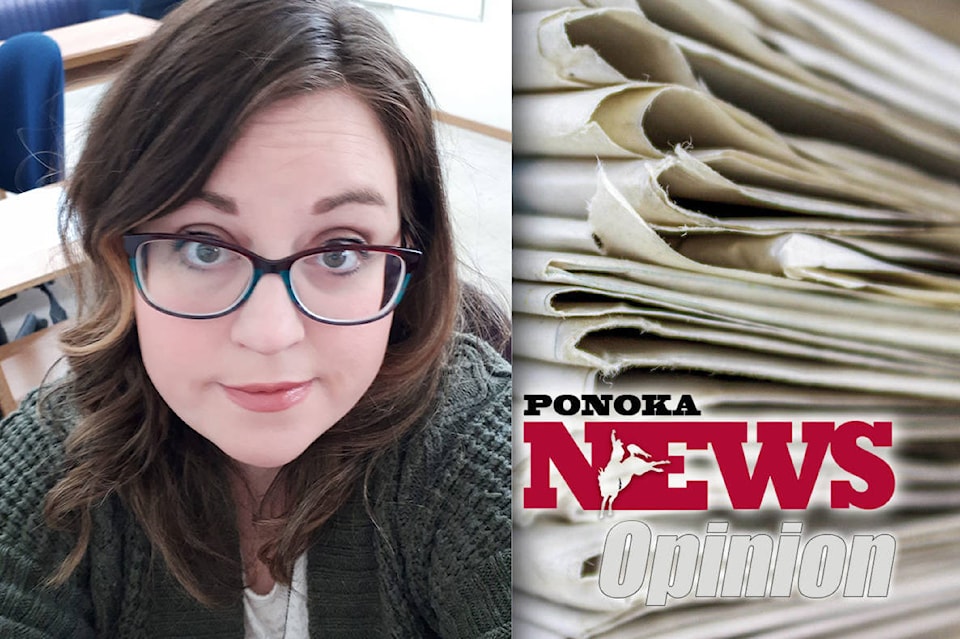Ever notice how sometimes it’s not just kids who should heed the adages commonly used to admonish children?
Eat your vegetables.
Don’t run with scissors.
Be kind.
Really, it’s sound advice for any age.
Here’s another good one I use a lot with my kids: saying something doesn’t make it true.
I recently received an anonymous email that stated: “Regarding your news articles … beyond pathetic that you continue to print Hinshaw’s lies. It is beyond unconscionable that this woman continues to either be completely ignorant of facts on COVID or bought off to do what she does. We are very unimpressed with your news media that you would be a party to this.”
Sometimes people deny information is true because it makes them feel safer. But saying Hinshaw is “ignorant of the facts,” doesn’t make it true.
Do I believe Dr. Hinshaw is lying about the seriousness of COVID-19? No. Do I think there is likely a lot of collaboration and discussion between different parties to settle on what a message should be in order to present consistent, reliable messaging to Albertans with the intent to help keep us safe? Yes.
Is she compensated for her position? Most likely — she is doing a job. Does that mean she is being “bought off”? I think not, but I suppose it depends on how you choose to interpret the facts.
Likewise, just because information is stated from an official source and may be the most reliable information available at the time and it’s perfectly acceptable to report it as stated by the official, that doesn’t necessarily make it true.
Part two of the philosophy of “saying something doesn’t make it true,” is: if you believe something isn’t true, why be offended by it?
The anonymous complaint doesn’t hurt my feelings, because I don’t consider it to be true.
A news article isn’t trying to tell you what to think — its purpose is to state information from a source, and let the reader make up their own mind.
I know I’ve harped on this before (see previous column: Journalism a reflection of public consciousness, not a subversion of it) but I feel in this day-and-age that this concept can’t be stressed enough.
Though I don’t generally follow White House pressers or give any endorsement to past or present administrations, I felt this one line I’ve seen online was rather brilliant.
The alleged viral quote, which may be mis-attributed or misquoted, thought to have been said by press secretary Kayleigh McEnany is: “I can only explain it to you. I can’t understand it for you.”
It’s a sentiment I can relate to.
As journalists, as much as we would like facts to be black and white, I’m finding more and more that truth is relative, and almost anything is open to interpretation.
A prime example? How active COVID-19 case numbers are reported on the alberta.ca geospatial map. If you don’t understand the two different settings on the map, municipality versus local geographical area, the numbers seem to contradict themselves.
It’s confusing and frustrating that the numbers aren’t available for just the Town of Ponoka or just Ponoka County. But that doesn’t mean that the numbers as presented, for the areas they are intended for, aren’t accurate.
I can think of a couple of other examples where the facts become difficult to discern from fiction.
The UCP government announced in March 2020, that it intended to fully or partially close 20 provincial parks and transfer another 164 to third-party managers.
Now, the UCP has launched its “My Parks Will Go On” campaign, asserting that Alberta parks will continue to be open and accessible.
Different groups are interpreting the same information in two different ways, and they seem to contradict each other. So what is the truth?
To me, that isn’t yet clear.
And, as much as it pains me to say, media isn’t always innocent of muddling the facts. We get it wrong sometimes, too. We’re human.
Not too long ago, Ponoka RCMP detachment commander Staff SGt. Chris Smiley was vilified on social media for several weeks because a reporter from outside this community chose to take his comments and present them on their Twitter account in a way that suggested his words were referring to anti-racism demonstrations in Red Deer, which have had violent altercations.
They were taken out of context. People jumped to conclusions without seeking to understand or verify facts, passed judgment, and a good police officer, who has done nothing but give his best to serve this community, was dragged through the mud, receiving negative attention on a national scale.
He didn’t deserve that, and it didn’t have to happen. The wrath of public opinion could have been averted by a more clear, accurate representation of the facts.
Hopefully, most journalists are striving to always do their due diligence and do their best, and correct their mistakes if and when they occur. Sadly, that’s not always the case.
What’s the take-away from all of this? Think for yourself. You don’t have to be mistrusting, but verify before passing judgment. Read trusted, reliable news sources, and make up your own mind.
After all, determining what is fact versus what is fiction is not always black and white.
